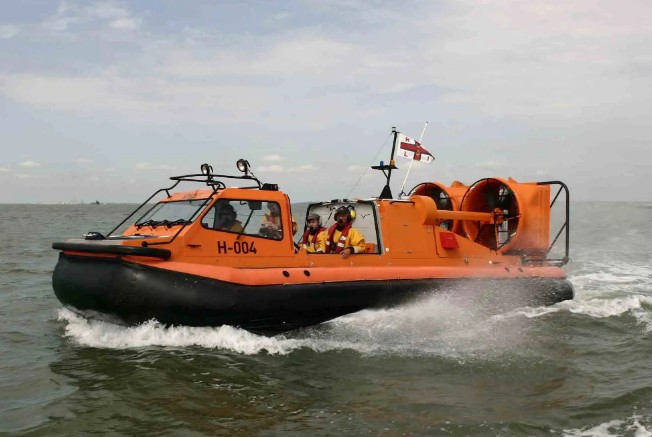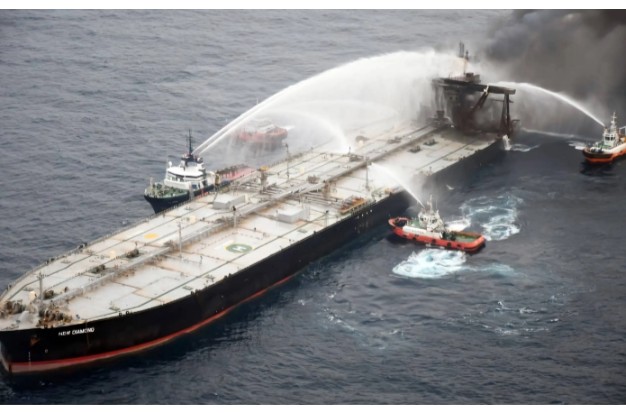The ship’s steel hull was battered by a ferocious sea, and the wind howled with ancient strength. In the summer of 2010, it was the middle of the night. A container ship with a length of 230 meters named Kota Kado had grounded outside the port of Hong Kong. The salvage master Captain Nick Sloane was on the bridge in his life jacket, ready for the worst even though her crew had evacuated. He saw the typhoon’s power as it tore through the damaged ship in the shadows.
Only five other salvage team members were present where Sloane was holed up. They had made their way to the South China Sea a few days earlier with the intention of rescuing the Kota Kado. Sloane decided to stay on board with a minimal crew overnight because typhoons were expected to batter the ship that was grounded. Knowing that this would influence whatever actions they took next, he wanted to feel how the ship flexed in the storm and understand where it hit her hardest. But it was incredibly close.
90% of the world’s trade is transported by cargo ships, but they don’t always arrive at their destination without a hitch. In 2021, there were 27 cargo vessels lost in major incidents, and 357 in the previous ten years, according to the Allianz Insurance Company’s Safety and Shipping Review. They crash into rocks, reefs, and sandbars; they catch fire. However, they don’t always sink when they malfunction. Large ships can be worth hundreds of millions of dollars, so whenever there is an opportunity to save them, their owners almost always do so.
Salvors are the individuals that shipping companies use in such circumstances. And while at sea, they witnessed some extraordinary things. For instance, last year when the enormous Ever Given container ship ran aground, blocked the Suez Canal, and disrupted the global supply chain, salvagers stepped in to help. But how do you free a ship that weighs tens of thousands or even hundreds of thousands of tonnes when it becomes stuck somewhere?
After returning from a World Cup game in South Africa, Sloane, who is now a director at Resolve Marine Group, received a phone call informing him that the Kota Kado had encountered difficulties. The following day, he took a flight to Hong Kong.

On the way to port, the ship ran into a reef, which tore a hole in her side. She began sinking as a result of two cargo holds filling with water, about 25 nautical miles (46 km) southwest of her destination, and eventually hit a sediment bank. She became trapped when her bow pierced the ocean floor. The heavily loaded ship started to sink as more water started to flood the ship.
Many were sceptical that she could be rescued at all, remembers Sloane: “A large number of the surveyors said, “OK, the ship is completely lost; get ready for a wreck removal contract.”” He believed she had a chance still, though.
“She kept on sinking and the bow, literally every day, sank another half-a-metre to a metre (1.6-3.2ft),” he says. “It was touch-and-go.”
Sloane and his colleagues devised a plan to lighten the vessel and remove as much water as they could. This called for lighters, or barges, which are available in Hong Kong with substantial cranes. Fortunately, there were many of these barges available, and their operators were accustomed to heaving containers off vessels for transportation to shore because this is how cargo is frequently unloaded in Hong Kong.
Sloane wanted to remove as much cargo as possible. Over 1,200 distinct containers were ultimately freed by the lighters. The Kota Kado was seated with her bow submerged, making this type of operation time-consuming and challenging. It also takes longer to reach the heavier containers whose removal would really make a difference because they are typically stacked at the top because doing so lowers a ship’s center of gravity and keeps her stable.
The enormous snorkels followed. Sloane and his crew placed sizable pumps at the bottom of one of the cargo holds under water in order to drain the water from the ship. Additionally, they took out hatches on the deck above, welded enormous rectangular tubes, or snorkels, onto them, and then replaced the hatches. As of right now, the snorkels were hanging into the ship’s belly. Finally, two sets of hoses that extended vertically up through the snorkels were connected to the pumps below by a group of divers.
Sloane recalls that the pumps worked nonstop to prevent the engine room, which houses the most expensive and delicate machinery, from becoming submerged.
The salvage team was eventually able to refloat the ship after removing enormous amounts of water from the hold by putting air in some of the ship’s ballast tanks. Had they tried to do this earlier, the tanks could have ruptured, explains Sloane: “You must be extremely cautious when adding pressure when you are below 10m (33ft).”
The Kota Kado was eventually saved through all of this difficult work and towed to a shipyard for repairs despite not one but two typhoons, the second of which was particularly bad. Even today, she is still sailing, just under a different name.
The forces of nature can destroy ships when they find themselves in situations for which they were not really intended, like being pinned against rocks or stuck fast in mud. So, the Kota Kado was particularly at risk from strong storms.
“Like a paperclip, the more times you bend it, eventually it snaps,” says Rosalind Blazejczyk is the managing partner and naval architect at Solis Marine Consultants. She describes the difficulty that arises when a grounded ship is lifted or twisted by subsequent waves. In a swell or high tide, they can crash into it for hours, pushing one end of the vessel up and throwing it down again. Steel seems suddenly not to be so strong in those circumstances. Sloane mentions how his crew will occasionally weld enormous girders to a ship’s deck just to keep it stable.

